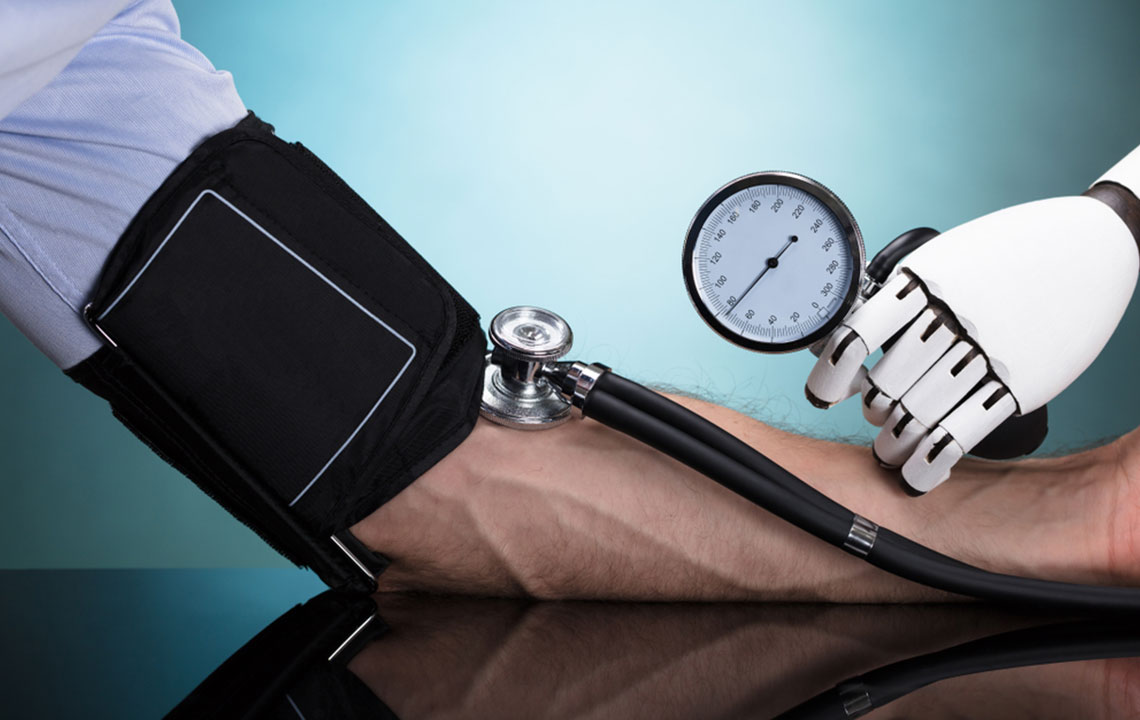The Recommended Diet for High Blood Pressure

High blood pressure also known as hypertension is a medical condition where the pressure of blood running through the body’s blood vessels rises sharply. HBP as we may call it may lead to the damaging of blood vessels, which in turn can lead to diseases related to heart, kidney, or even the eyes. High blood pressure is dangerous as it does not have any symptoms associated with it.
High blood pressure is categorized into two types: primary high blood pressure, and secondary high blood pressure.
Primary high blood pressure is the most common type of high blood pressure. It is caused by a number of lifestyle factors such as smoking, excessive salt consumption, alcohol intake, obesity, or even genetic disorders.
On the other hand, Secondary high blood pressure is a rare type of high blood pressure, which may be caused by kidney disease, constriction of the arteries in your kidneys, taking birth control pills, or even an endocrine disorder.
While medication certainly helps alleviate the symptoms of high blood pressure, it is important to combine this with the right high blood pressure diet. The right high blood pressure diet can tackle the problem at its root, instead of only alleviating the symptoms of the problem.
If you suffer from high blood pressure, incorporate the following foods into your diet.
Leafy vegetables : Vegetables that are high in potassium are often advised on a high blood pressure diet. This is because potassium acts as a cleansing agent, i.e., it helps in cleaning out extra sodium accumulated in the body through urination.
Leafy vegetables that contain good amounts of potassium include turnip, spinach, kale, broccoli, green beans, green peas, mustard greens, beet greens, coriander, romaine lettuce, and Swiss chard.
Yogurt and milk : Yogurt is high in magnesium, calcium, and potassium, and helps in regulating high blood pressure levels to a great extent. Drinking milk, a great source of calcium is another good option for lowering blood pressure.
Studies have found that people eating yogurt or drinking milk on a daily basis have reduced their likelihood of developing high blood pressure by a margin of 20 percent.
However, make sure that the added sugar in your yogurt and milk, is as low as possible for the best results.
Fruits : Some fruits that are high in potassium, magnesium, and fiber should be included in the high blood pressure diet to help you prevent high blood pressure.
These naturally sweetened fruits should be eaten fresh. Examples of fruits that are recommended on a high blood pressure diet include bananas, kiwis, apples, berries, citrus, melons, grapes, mangoes, oranges, peaches, pineapples, strawberries, pomegranates, and avocado.
Dark chocolate : Dark chocolate is also an excellent addition to your high blood pressure diet. It contains cocoa solids in large amounts and less sugar than other chocolates. Dark chocolate also helps in reducing the risk of cardiovascular disease, should be eaten in a limited quantity, Not till you are stuffed.
Seafood : Seafood is rich in protein and omega-3 fatty acids. It helps in providing the strength your body needs to function properly. An added benefit of seafood is its ability to balance and regulate your blood sugar levels.
Salmon, mackerel, and sardines are all good seafood options to help lower your blood pressure.
Juices : Natural Beetroot juice and pomegranate juice without any processed sugar should be included in a high blood pressure diet. Pomegranate juice is healthy and studies have proved the ability of this natural juice in lowering blood pressure levels.
On the other hand, beetroot juice helps in lowering both systolic and diastolic blood pressure. Beetroot juice tends to have quicker results than cooked beetroot.
Oils : Olive oil and sesame seed oil are two types of oils that have proven results against high blood pressure.
Olive oil is a relatively healthy fat, and acts as an antioxidant. It is a good cooking oil, known for its ability to lower blood pressure. Olive oil contains polyphenols i.e. compounds with anti-inflammatory agents, which help in reducing high blood pressure.
Sesame seed oil, on the other hand, is known to boost potassium levels and diminish sodium concentration in the blood, which in turn helps in reducing blood pressure levels.
Hibiscus tea : This is a kind of herbal tea that acts as an antioxidant, which in turn helps reduce high blood pressure levels, even in patients dealing with diabetes.
However, drinking too much hibiscus tea is not advisable as it could have adverse side effects related to your liver function.
Regular exercise is also important as far as maintaining your blood pressure is concerned. A healthy lifestyle, the recommended diet, and daily exercise will ensure that you are healthy.


